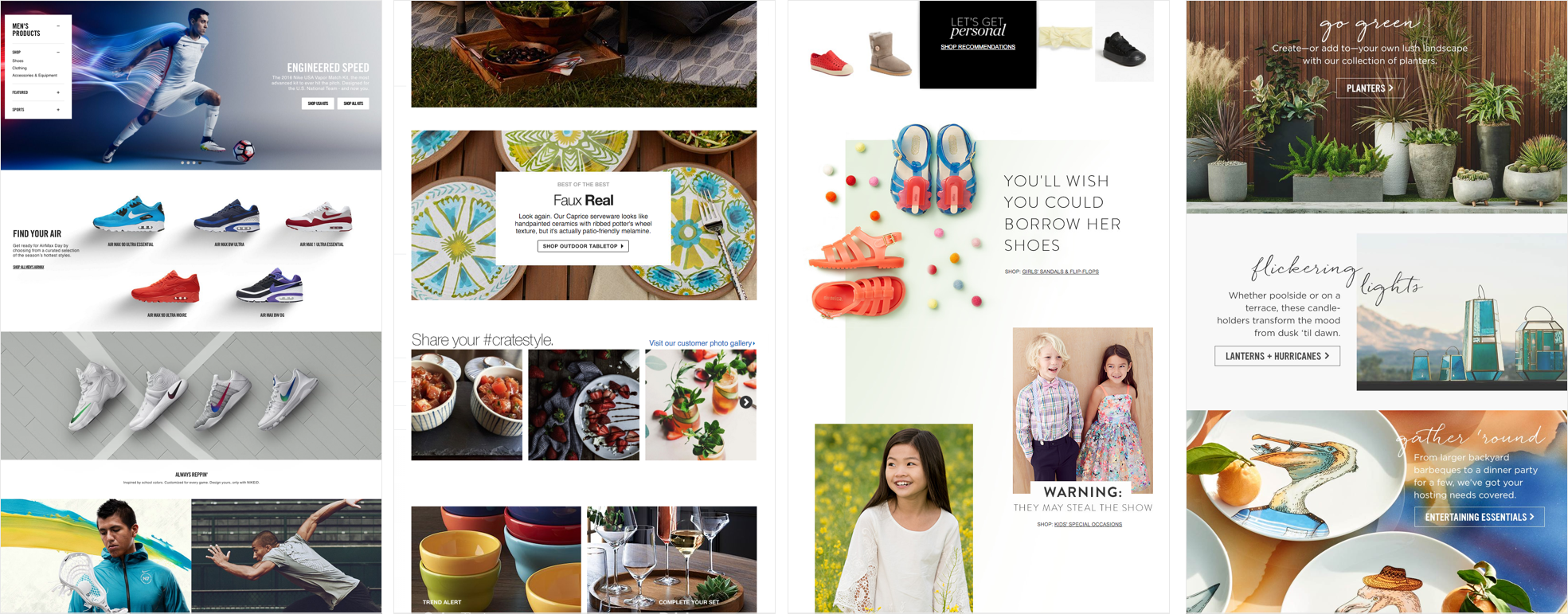
In the world of eCommerce, generating revenue is the name of the game. That revenue is dependent on purchases made by customers, which is why we put so much time and effort (and blood, sweat & tears) into optimizing the customer’s user experience. Countless hours are spent considering, critiquing and improving every possible interaction with the user, in an effort to convert shoppers into buyers. However, perhaps the most critical area of impact for eCommerce success is the customer’s ability to find product. After all, if customers can’t find the product they’re looking for, then how can we expect them to buy it?
...if customers can’t find the product they’re looking for, then how can we expect them to buy it?
Many factors play a role in product findability, each accommodating different types of eCommerce shoppers. For instance, some customers know exactly what they want. These shoppers are looking to dive deep into the product catalogs in search of a particular item and will likely rely on the navigation, search, and filters to do so. But what about those who don’t have a clear idea of what they want? How do we support product findability when some shoppers don’t even know what it is that they’re looking to buy?
Well, that’s where landing pages can come into play. These customers need some form of guidance — whether it's inspirational, motivational, or educational — to help them make more meaningful scope selections. Think of how brick-and-mortar stores address this challenge… alluring displays to showcase product, helpful staff to offer guidance, a unique environment to relay brand essence. So, in true omni-channel fashion, wouldn’t it make sense to provide a similar user experience online? The following points outline various ways that landing pages can be used to provide the guidance that your customers need to discover the products they want.
Encourage explorative browsing.
Since some customers don’t have a clear idea of what it is that they’re looking for, they’ll start exploring the site by easing into the shopping experience through the top-level categories (for many sites, these are the product categories that make up the main navigation). Presenting these pages as product catalogs is a bad idea. At these levels, the categories are so broad and contain so many products that shoppers could become instantly overwhelmed.
For example, imagine clicking “Clothing, Shoes & Jewelry” on target.com and being presented with a catalog list of all the products within that category. Yikes. The odds are that you’re going to have to exhaust your filtering tools and scan hundreds, if not thousands, of products before finding something that you might be remotely interested in purchasing. And then consider going through that on a mobile device, when you’re only able to see maybe 4 products at a time within your viewport. Ain’t nobody got time for that. The good news is that we can solve this issue by linking the first 1-2 levels of categories to corresponding landing pages instead of catalog pages. These landing pages should reflect the breadth of product offerings within the given category and help shoppers deliberately narrow their scope.
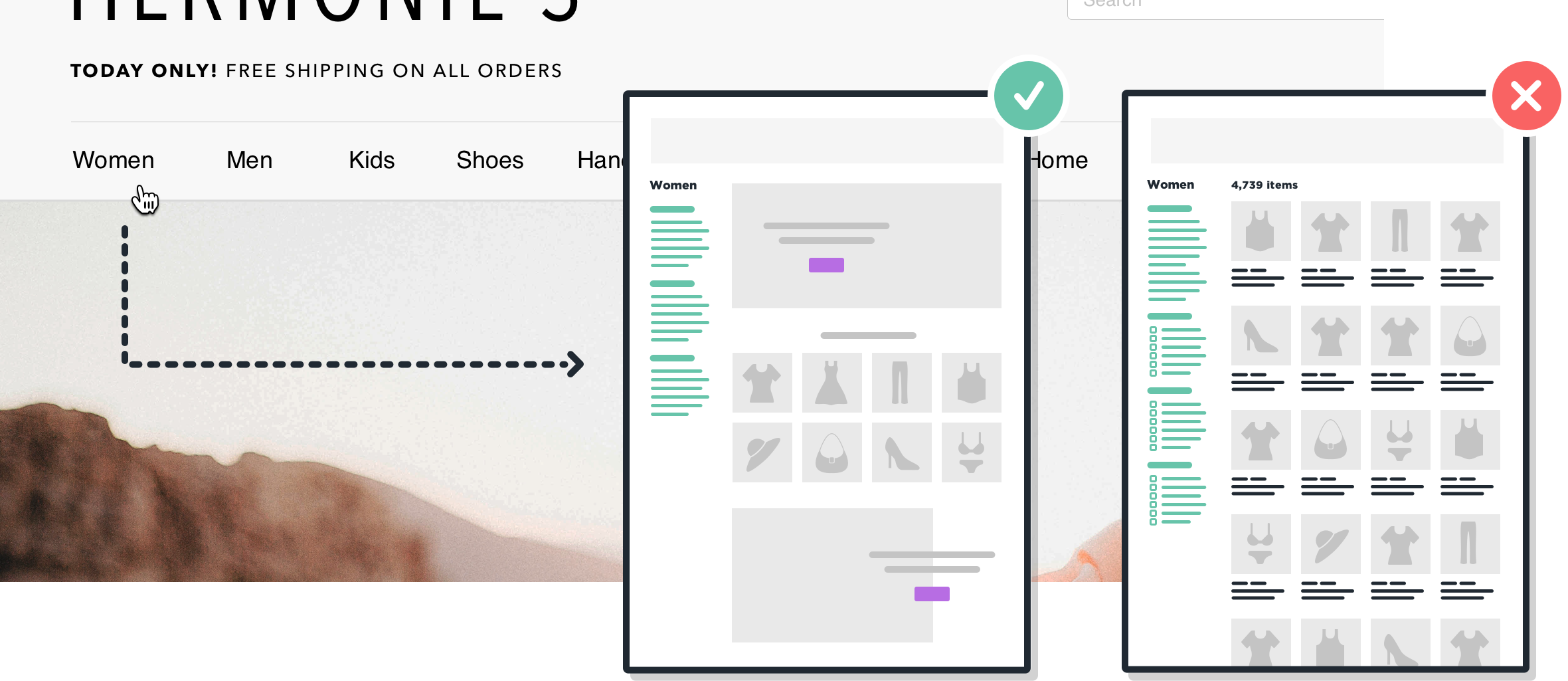
Above: A mock-up example shows top-level categories linking to landing pages rather than catalog pages.
Support alternative shopping methods.
Landing pages offer a way to promote popular alternative shopping strategies that might otherwise be overlooked or underutilized. For instance, when shopping for activewear some customers might prefer to shop by activity (i.e. yoga, running, cycling, etc.) rather than by literal product category (i.e. tops, bottoms, jackets, shoes, etc.). Although the ability to filter a product catalog by activity might be available, it could be easily lost in the mix of all the other filtering options. Landing pages can accommodate common shopping behaviors by using curated call-to-actions that promote popular thematic and/or pre-filtered collections of products.
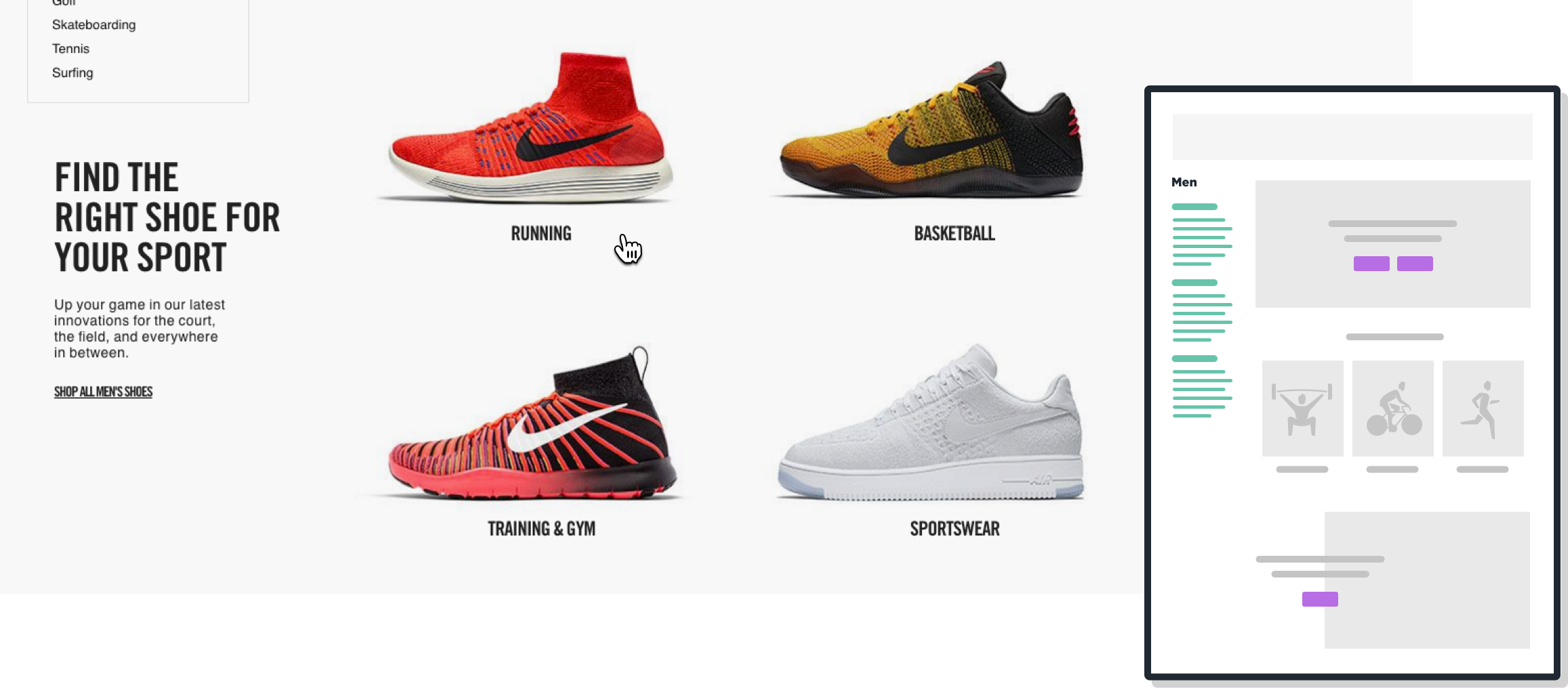
Above: Nike.com lets their customers shop for shoes by activity.
Present relevant promotions.
Some shoppers are more price-conscious than others and are, therefore, more motivated by deals and discounts. Landing pages provide the perfect place to feature promotion-related content that is specific to the given category. However, to mitigate the adverse perception of banner blindness, this content should be treated very carefully and should remain a secondary focus to the subcategory thumbnails. eCommerce best practice experts at Baymard Institute, advise using great consideration of size, placement, aesthetics and page flow when designing promotional content. Call-to-actions that are overly “ad-looking” can negatively influence the customer’s perception of the site and brand.
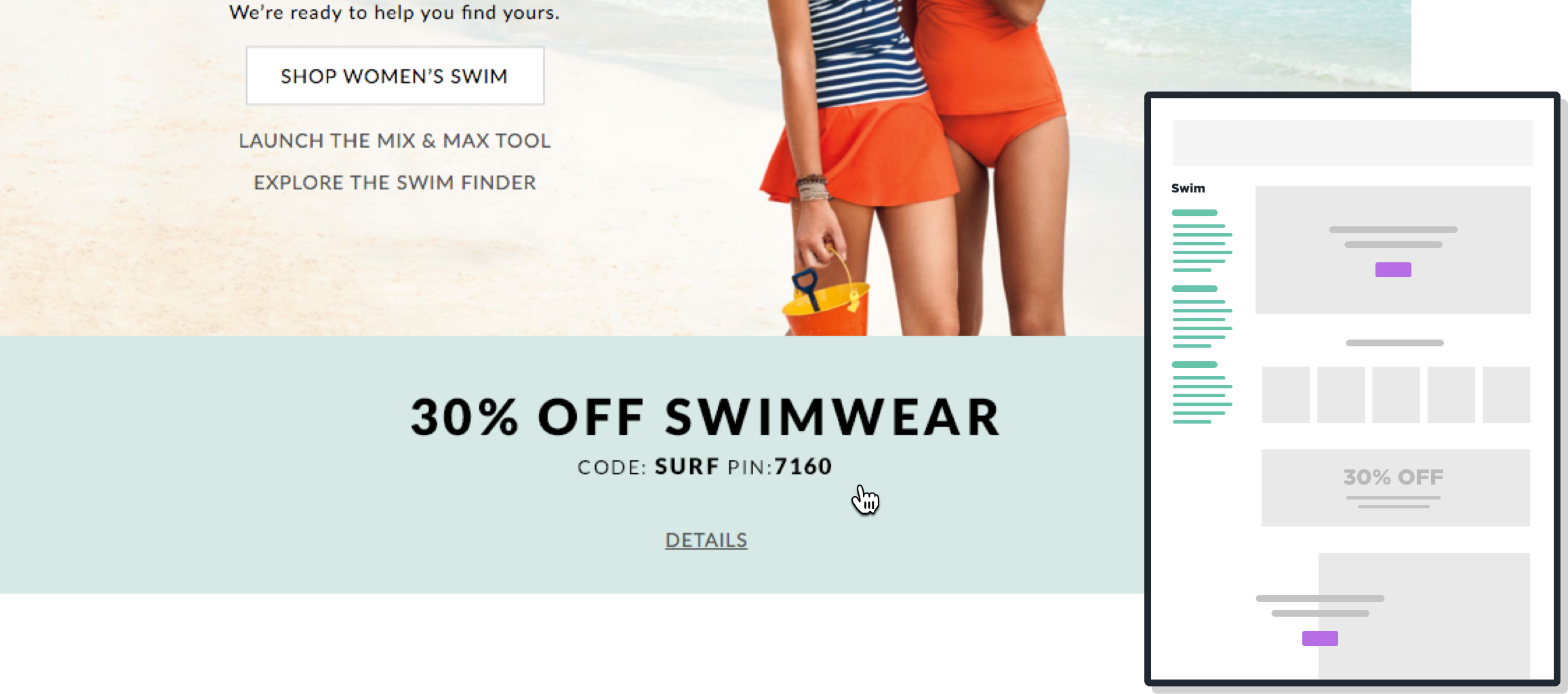
Above: LandsEnd.com features promotions in an unobtrusive way.
Provide educational & informative content.
Many shoppers who browse are looking to learn more about an individual product to determine their level of interest and decide whether or not to make a purchase. This is most common for products that are primarily defined and differentiated by their specifications and features (i.e. cameras, cell phones, diamonds, cars, etc.). However, if this information is difficult to find, insufficient in content or is presented in a lousy format, then it’s highly likely that your shopper is going to abort their mission. Make this content easy to find by including it on pertinent landing pages. Furthermore, consider researching the way that your customers think about the subject matter to determine what aspects are most important to them. You can then use the findings from that research to inform the design of the content, presenting this information in an optimal format that aligns with customer expectations.
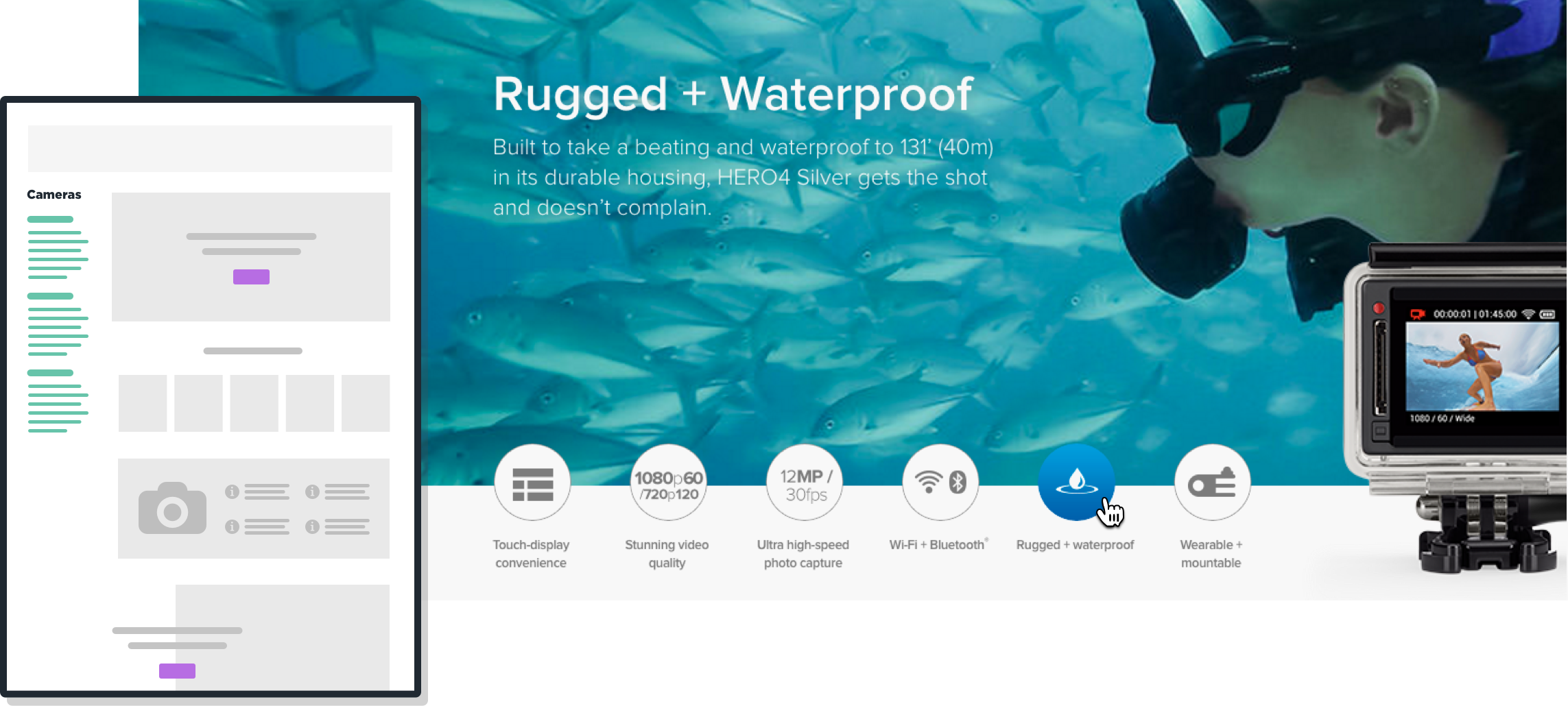
Above: GoPro.com displays the key features for their cameras in a way that supports quick understanding and easy comparison.
Support business strategies.
While accommodating consumer needs are paramount and should undoubtedly remain the driving force behind the site’s user experience, there’s no reason why landing pages can’t also be leveraged to reinforce individual business strategies. For instance, to support an increase in revenue generation, use your site’s analytics to determine the top-grossing subcategories, products, and brands and tailor your landing page content accordingly. Just as grocery stores use end-capping to attract attention for certain products, landing pages can be utilized similarly by curating content to support a particular goal.
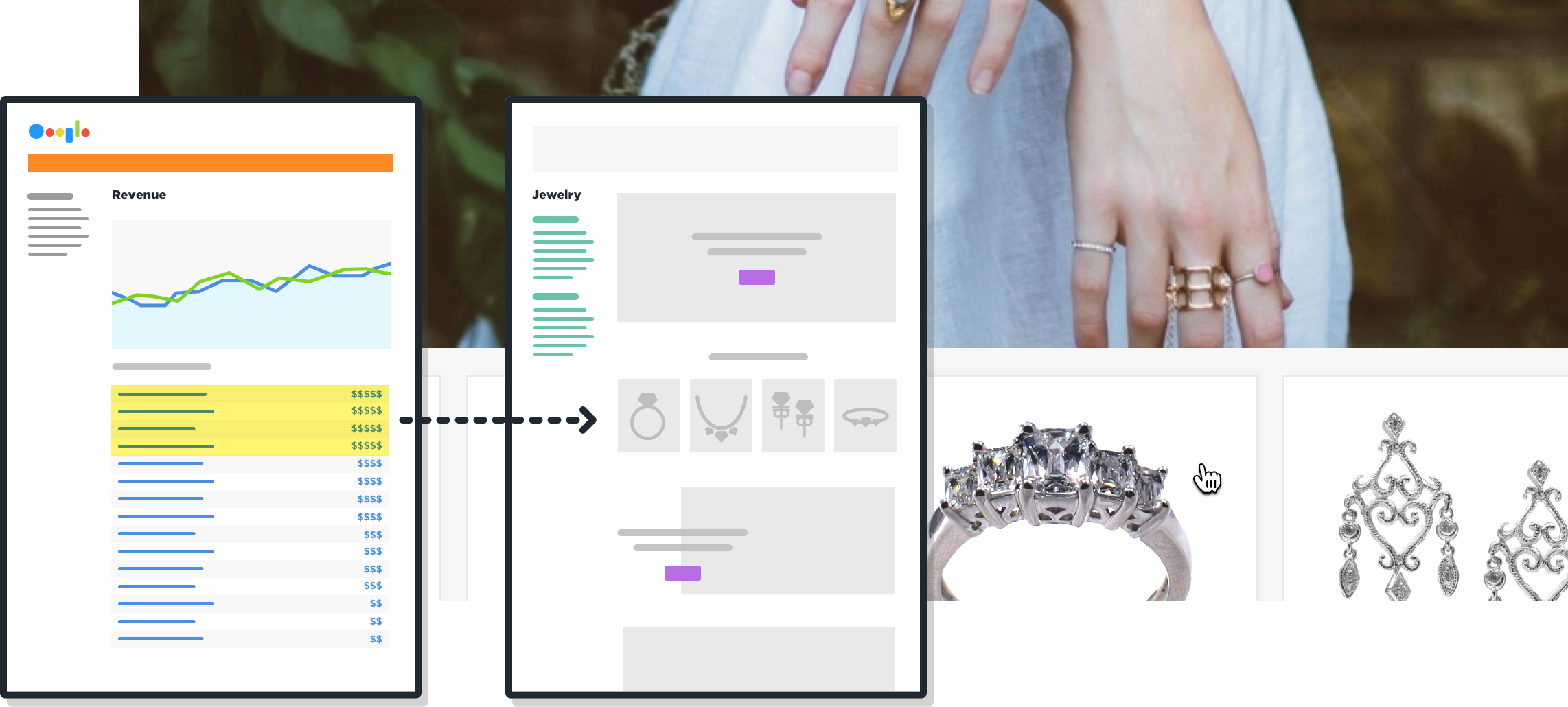
Above: A mock-up example shows how analytics can help to inform landing page content in support of business strategies.
Reinforce your brand’s visual language.
Every touchpoint between company and customer is an opportunity to create a memorable impression that could differentiate you from your competition. By communicating the essence of your brand through a consistent visual language, you can instill a sense of community, culture and lifestyle to your customers that are uniquely associated with your brand. For instance, Tiffany & Co. uses clean layouts, dramatic photography and elegant typography to express the notion of high-fashion, exceptional quality, and sophisticated dignity. Just like homepages, landing pages offer plenty of real estate to design highly-visual layouts, making them the perfect place to convey brand personality.

Above: Tiffany.com conveys the essence of their brand through thoughtfully designed landing pages.
The takeaways.
Landing pages can have a tremendous impact on customer user experience and product findability. However, the nature of that impact — be it negative or positive — depends on the quality of their implementation. In this post, we’ve covered only a few of their benefits and at a very high-level. When evaluating and creating your landing pages, we recommend doing some in-depth research to understand your customers and their behaviors, as well as reading up on the latest eCommerce design best practices. In the meantime, feel free to stew on the following takeaways:
- Use curated landing pages to provide some intermediate guidance rather than bombarding the customer with an overwhelming amount of products.
- Consider the various ways that customers shop for the given subject matter to promote alternative strategies that better assist the customer in narrowing their product scope.
- Provide relevant promotional content in a manner that is cohesive and complementary to the rest of the page design.
- Include any relevant educational material regarding products within the given category to help convert research browsers into buyers.
- Create a “win-win” for you and your shoppers by satisfying customer needs while tailoring content to align with company objectives.
- Make meaningful connections with your customers by using landing page design to reiterate the essence of you brand.